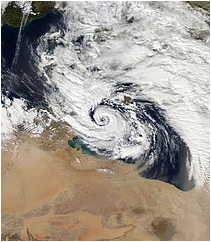WP4 - Variability of oceanographic dynamics, impact on deep sea ecosystems and future scenarios
Work Package (WP 4) "Variability of oceanographic dynamics, impact on deep sea ecosystems and future scenarios" consists of three thematic focus on the biological processes determined by oceanographic processes, the dynamics of deep and superficial water masses. The main scientific results are:
A1 - Identification of the physical, biogeochemical and biological variability in the deep water column
One major result was the identification of the dominant modes of temporal variability in the Tyrrhenian and Ionian seas and Straits of Sicily. The circulation was observed from experimental data and simulated with numerical models at different scales and of different types, on relatively long periods in the order of twenty years. Study on the variability of the water masses dynamics has been useful to address some issues related to understanding the mechanisms that regulate the carbon cycle (POC – Particulate Organic Carbon - and DOC - Dissolved Organic Carbon). In particular the southern region of the Tyrrhenian Sea has been chosen as reference area, where historical data are available (hydrological and bio-geochemical); there the role of mesoscale structures and of the DOC concentration variability has been studied. In this context, the role of the anticyclonic structures as areas where the DOC gets trapped and where its concentration can have persistently high levels.
 |
| Surface temperature of the central Mediterranean Sea |
 |
| Ricostruzione spaziale di un modo di variabilità della circolazione tirrenica caratterizzato da un periodo di 6 anni |
A2 - Circulation and abyssal mixing and ties with the superficial and intermediate circulation
These studies have focused on the Adriatic-Ionian system and have developed along two lines: the first is on the effect of climate on circulation and on its thermohaline characters. This research considered the North Atlantic Oscillation and the Mediterranean Oscillation Index and their relationship with the thermohaline characteristics and with sea level, which gives an idea of the different operation in the two basins; the Adriatic more influenced by the atmosphere and the Ionian whose dynamics seems more driven by internal mechanisms. The second line of research concerns the effect of the circulation and of the sea-atmosphere interaction on the biological activity; it was noted how the phytoplankton phenological characteristics vary depending on the Ionian Sea circulation and on the buoyancy and heat exchanges between the atmosphere and the sea, which affect the relationship between the mixed layer nutricline depth.
 |
| Correlation coefficient between 1a) the surface temperature and the winter (January, February, March) index of the NAO and between the surface salinity and the NAO index and 1b) between sea level and the winter NAO index |
 |
| Interannual averages (1998-2012) of the phenological parameters: DSfirst (date of beginning of flowering), Dsmain (date of beginning of the main peak of chlorophyll), DELTAmain (duration of flowering) and CHLmax (maximum of chlorophyll) – first left column. DELTAmain is expressed in days and CHLmax in mg m-3. The central column shows the anomalies of the metrics compared to the pluriannual average of the cyclonic circulation, the right column shows the anomalies related to the anticyclonic circulation. The Ionian Sea was affected by the cyclonic regime between 1999 and 2005 and by the anticyclonic regime between 2007 and 2010 |
A3 - Processes of the surface mixed layer, response to extreme weather events and impact on the ecosystem
Surveys were conducted on the response of the ecosystem biota to atmospheric events that influence marine turbulence at very small scale. Through the use of a tool prototype specifically designed by SZN it was possible to describe the physiological response to microturbulence by three species of diatoms (Chaetoceros decipiens, Thalassiosira patella and Skeletonema marinoi); they appear to react differently to the applied stimulus with very innovative results for biological oceanography. The effect of anomalous atmospheric events on the water column upper portion were investigated in terms of climatic variability. The turbulence induced by strong winds favours the heat penetration in depth; while that signal disappears in the surface within a few weeks, in the subsurface layer it may involve longer time scales.
 |
| Prototype designed by SZN to generate the isotropic microturbulence generated by a grid oscillating in the vertical direction |
 |
| TLC (Tropical-like cyclone) Qendresa I on the Central Mediterranean, November 7, 2014 |




